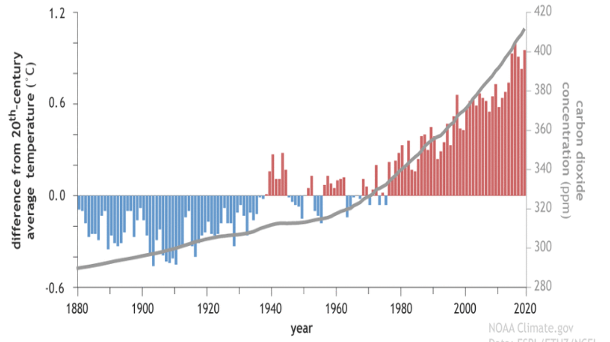February_Carbon Trading|From Carbon Pricing Mechanism to Carbon Trading: China's Carbon Trading Current Situation(up).
I. From Greenhouse Effect to Carbon Pricing and Emission Control: From"TheFrom the Kyoto Protocol to the Paris Climate Agreement
The intensification of the greenhouse effect has led to an increase in the Earth's average temperature and a worsening of climate change. After the industrial revolution, human activities created considerable carbon emissions, the greenhouse gas effect led to an increase in the earth's temperature, from 1988 to 2020 statistics can be seen that this temperature curve increased dramatically. (As shown in Fig. 1) It can be seen that, in order to solve the problem of climate change, in 1990, Sweden has taken the lead in proposing the carbon tax policy as a means to reduce carbon emissions, in addition, in 1997, the "Kyoto Protocol" was put forward, which requires developed countries to reduce carbon emissions by an average of 5.21 TP3T. Three types of trading methods are defined to help reduce carbon emissions: joint emissions reduction (JI), Clean Development Mechanism (CDM), and Emissions Trading (ET), but since then, except for the European Union, in 2005, the EU has adopted a "carbon trading" policy to help reduce carbon emissions. However, with the exception of the European Union (EU), which introduced a carbon pricing (carbon trading) mechanism in 2005, most developed countries have not yet paid much attention to the issue of carbon emission reduction.
Figure 1: Climate Change and Greenhouse Gas Emissions (% of CO2 Concentration)

source : NOAA Climate Change










